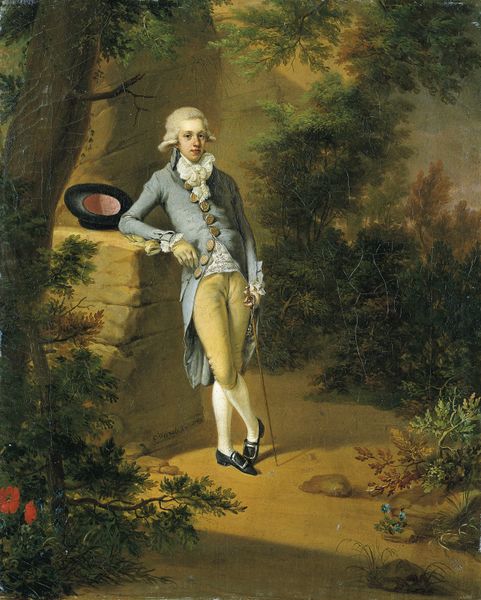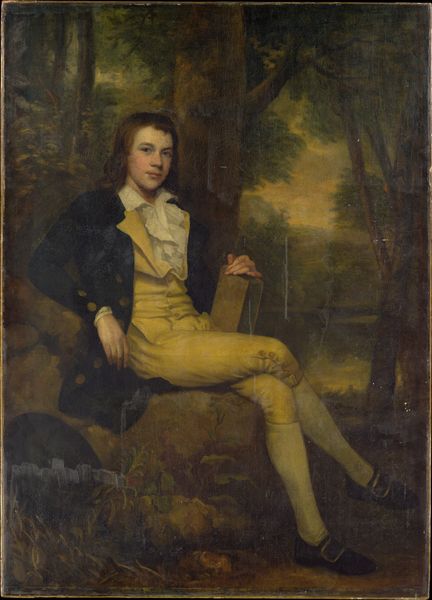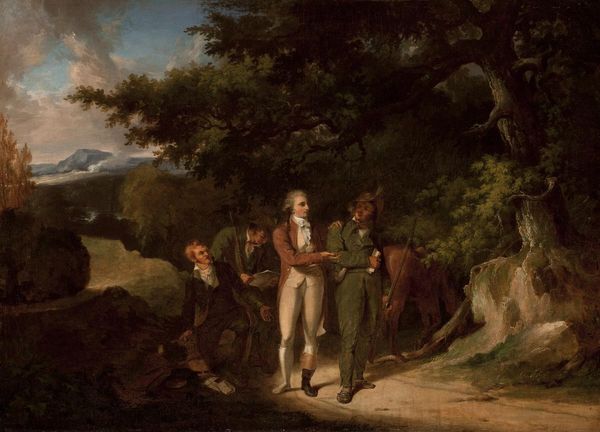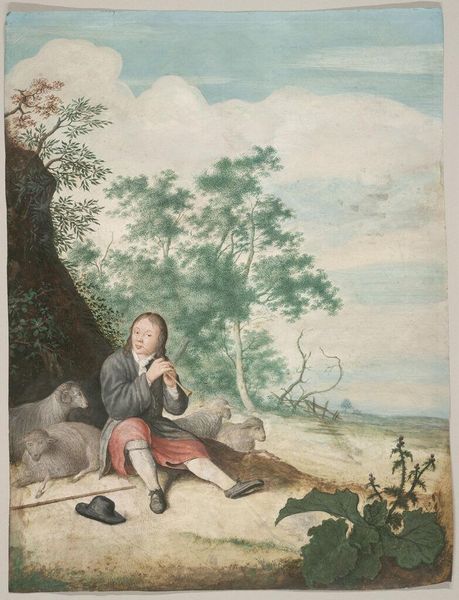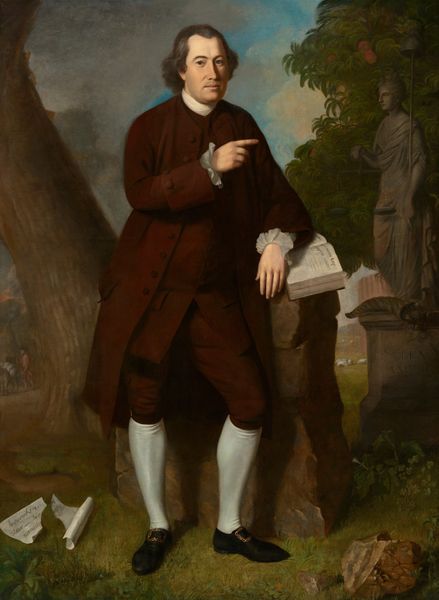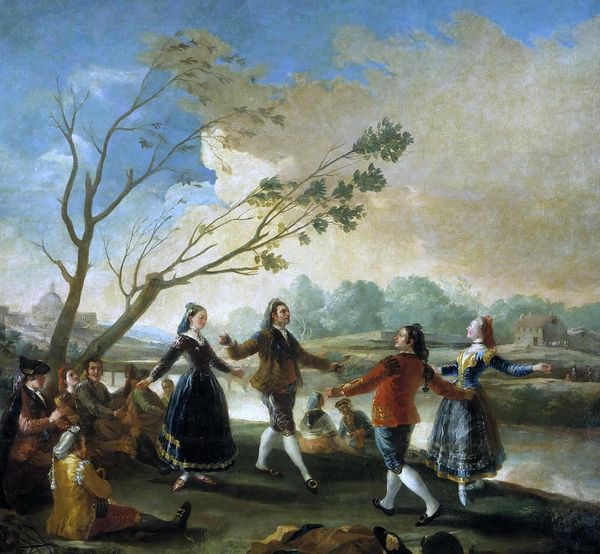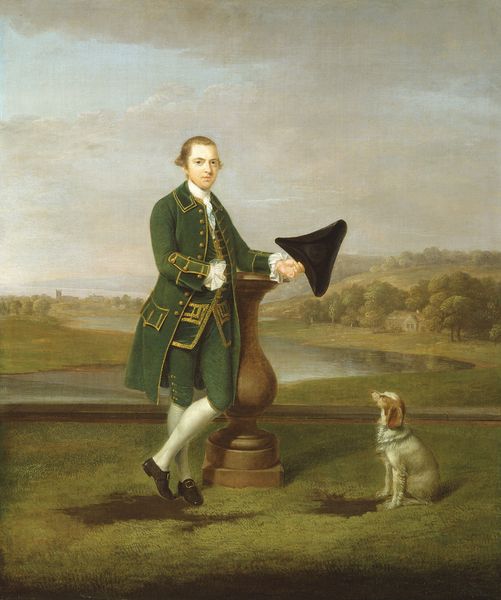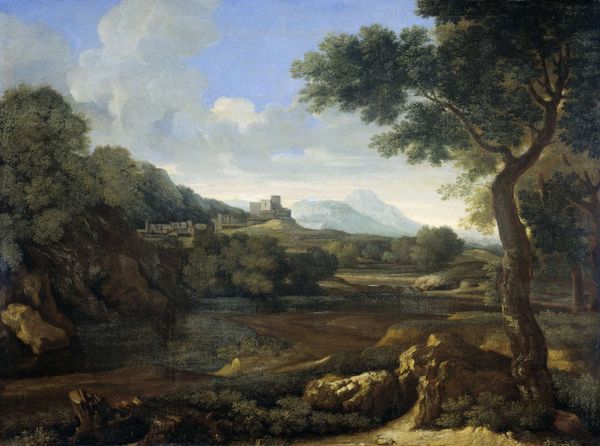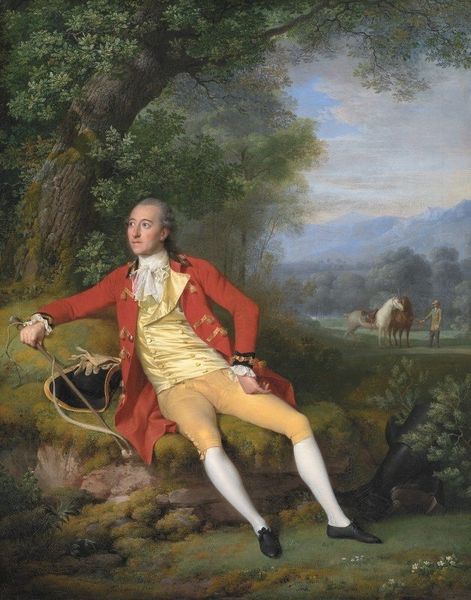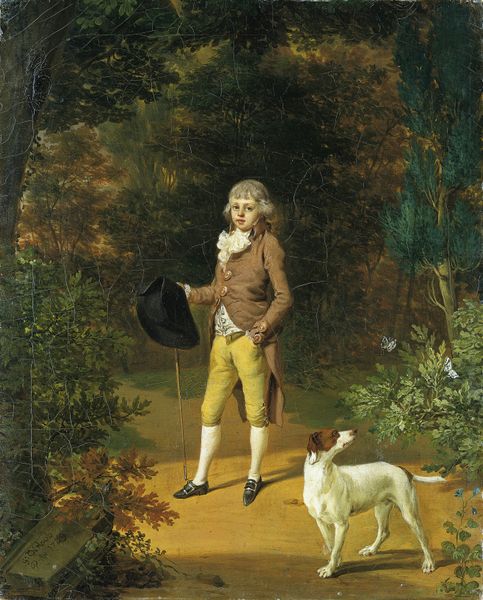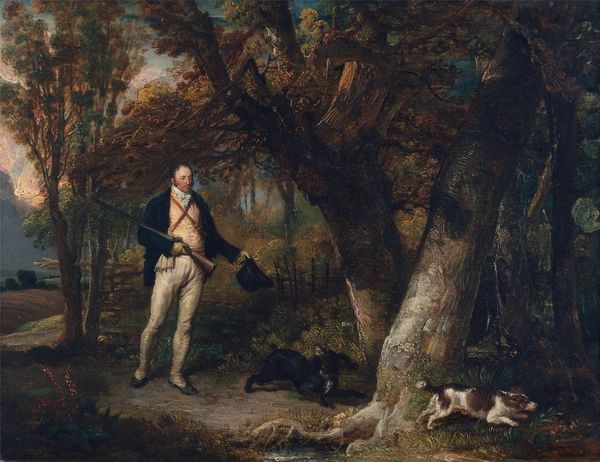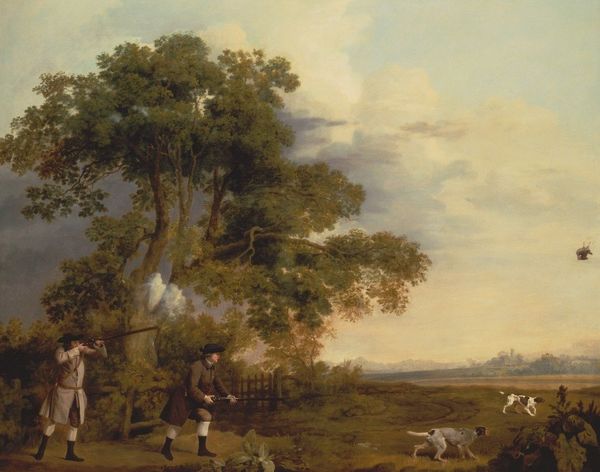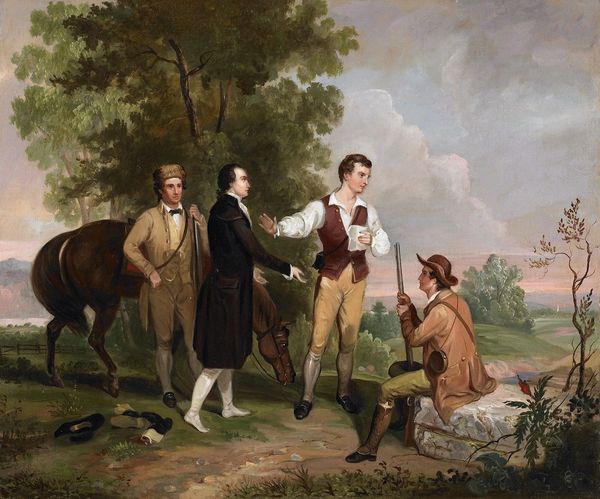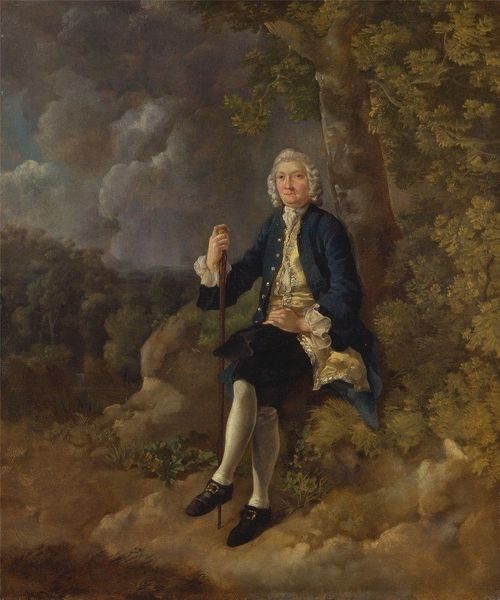
Dimensions: overall: 69.9 x 97.8 cm (27 1/2 x 38 1/2 in.) framed: 83.8 x 103.5 x 5.4 cm (33 x 40 3/4 x 2 1/8 in.)
Copyright: National Gallery of Art: CC0 1.0
Curator: This is Arthur Devis’ “Portrait of a Gentleman Netting Partridges,” created around 1756 using oil paint. It depicts a man posed rather stiffly in a lush landscape. Editor: It has such a posed, almost performative quality about it, don’t you think? The setting is pastoral, but it also reads like a stage for social identity. Curator: Absolutely. The image contains significant status symbolism of land ownership and control over nature during a period of social unrest in Britain, it serves almost as a form of propaganda. His leisurely pursuit highlights economic privilege in contrast to those experiencing poverty and dispossession at the time. Editor: It certainly does! Observe the meticulous details in his attire, reflecting societal hierarchy and a certain refinement. The netting of partridges becomes a symbol of dominance—of the right to engage with and, in essence, own elements of the natural world, reinforced by the gun resting nearby, which gives it all a sharper edge. Curator: But also consider that Devis, through paintings like this, essentially produced idealized versions of the landed gentry that helped construct and promote social hierarchies and power dynamics. This isn’t just about a man netting birds. It’s about solidifying a social order. Editor: It brings up the layered historical narratives behind representations of leisure and the implications of such a display of ownership and control over the land and wildlife. It reveals so much about that specific period, a visible construction of status and control amidst underlying societal issues. Curator: The backdrop adds another layer; nature as backdrop. It isn’t just a pretty vista, it is actively dominated. Even controlled through art. Editor: I am curious to investigate this scene within art historical themes. Are we really invited to connect it with similar themes like hunting and its link with power going back millennia? Fascinating to see the visual links! Curator: Viewing this, I see a reinforcement of class, gender, and economic privileges that are vital to deconstruct as we interrogate how we represent and reproduce historical narratives even now. Editor: It leaves me wondering about the many facets and historical and visual connotations contained in a single representation of leisure. What it tries to project… and what it ultimately reveals.
Comments
No comments
Be the first to comment and join the conversation on the ultimate creative platform.
